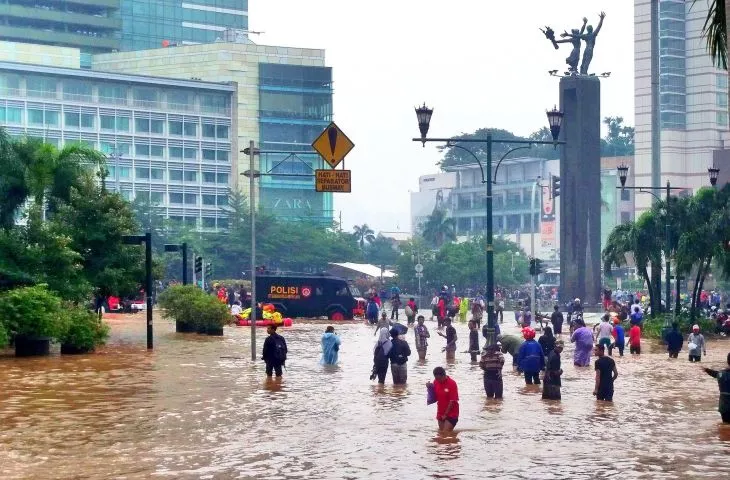"Climate Change Space" is a series of articles on architectural strategies for adapting cities to the climate crisis. Each text will touch on a different issue or function that plazas, parks and streets will have to perform in the near future - from water retention, to providing access to food, to places prepared to welcome climate migrants. Every two weeks, we will look at specific ideas from designers and already implemented solutions for transforming public spaces into a buffer to reduce the negative effects of weather change and provide infrastructure for the crisis.
Partner of the series
Relocating Cities. Kiruna, Jakarta, floating settlements and their floating farms
(Episode 5 of the series titled "Climate Change Space")
The first action taken in the face of climate change or natural disasters is to help on the ground, to adapt existing infrastructure, to transform a neighborhood, a city, a region. This approach is justified both for cultural reasons, continuity of history, attachment to place, but also for economic and environmental reasons - using existing infrastructure and transformation instead of building a new one from scratch limits the scope of interference. However, such a path is not always possible. Changing climatic conditions, rising sea levels, or environmental contamination often force the relocation of entire cities to more secure areas.
Kiruna - mining disaster and moving the city brick by brick
With a population of eighteen thousand, Kiruna is a Swedish town located beyond the Arctic Circle, whose economy is based on the operation of one of Europe's largest iron ore mines, and which has now proven to be a threat to it. The mining of deposits and tunnelling have caused cracks and landslides to appear in populated areas of the town. Representatives of the state-owned mine predict that the situation will only worsen as they attempt to reach deeper deposits. Excluding the closure of the mine, which has been in operation for more than a century, the authorities have decided to resettle six thousand residents of the most endangered areas of Kiruna to a new location.
New Kiruna - relocating the town and residents
© White Arkitekter
Not only three thousand new houses, but a full infrastructure and a new city center are planned for the next two decades. Some of the historically valuable buildings will be moved - brick by brick or transported in their entirety to new locations. Financing of the entire project rests with the mine, which will buy up properties at risk of mining damage. Residents were given the option of staying in the city and settling in New Kiruna or emigrating. 95 percent of them decided to stay.
Kiruna, the need to relocate the city due to mining disasters
© White Arkitekter
The relocation of the city has been divided into phases, so as to successively resettle people from vulnerable areas first. However, this strategy will not last until the very end of the operation - in order to avoid a sense of abandonment, residents in the final stages of the city's relocation will move in large groups. The operation was launched in 2018, and the architectural design is the responsibility of White Arkitekter, which developed the master plan for New Kiruna.
New Kiruna - visualization of the city center
© White Arkitekter
The architects sought to fit in the unique landscape qualities and preserve the identity of the relocated city, while shaping a higher quality of space. Indeed, the new Kiruna will offer everything that its predecessor lacked - meeting places, cafes, cultural and entertainment institutions. The old city did not have a clearly defined center, the construction of New Kiruna began symbolically with the city hall, which is to initiate the construction of the center. However, the preservation of the city's identity will not be limited to the name itself and its residents.
As part of the public consultation, it was decided to relocate, among other things, specific street names and city equipment like the clock tower. The abandoned Old Kiruna will not become a ghost town either - a green area will be created in its place, which will not be threatened by mining damage.
On the next page:
Jakarta - floods and relocation of Indonesia's capital to Borneo









































